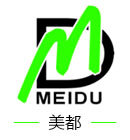Basic Care Tips for Dendrobium officinale
Dec 10,2021
Iron-skin Dendrobium has been cultivated in our country for a long time and has gradually become familiar to people. Initially, it was grown wild, but as supply and demand increased, large-scale artificial cultivation took off—leading to the emergence of various pests and diseases. Today, let’s briefly discuss the basic care tips for nurturing Iron-skin Dendrobium effectively.
(1) When selecting a substrate, it’s best to choose a material that offers good air permeability while also retaining moisture.
1. Cedar bark boards (poor water retention; consider adding wooden blocks, wood chips, or sawdust in the gaps).
2. Bark and wooden blocks (a relatively superior substrate option).
3. Wooden blocks, wood chips, and sawdust (which provide slightly poorer air circulation).
(II) Field Management
Some Dendrobium orchids are grown from small seedlings, while others are propagated by pruning older stems to encourage the growth of new ones. In either case, the first critical step is root development—this is precisely the stage where phosphorus-based fertilizers can be applied to promote strong root growth. Once the roots are well-established, no matter which type of Dendrobium you’re cultivating, it’s essential to focus on encouraging stem elongation, as this directly influences yield potential. During this phase, a high-nitrogen water-soluble fertilizer works effectively, and foliar sprays with appropriate leaf-specific nutrients can also be beneficial.
Beyond ensuring adequate nutrient supply, managing humidity levels is equally crucial for Dendrobium growth. These orchids thrive in environments with 65–85% humidity, so consistent misting is key—ideally, daily morning sprays to maintain optimal moisture conditions. In addition to water-soluble fertilizers, you might also consider slow-release fertilizers, though their application should be carefully controlled based on individual needs.
Lastly, one of the most effective tools we recommend is microbial fertilizer, which plays a vital role in preventing root rot and other stem-related diseases. Given the inherently high humidity levels required for Dendrobium growth, these plants are particularly susceptible to heat-induced stress and associated disease outbreaks. To help protect your plants, let me now walk you through some of the most common diseases affecting Dendrobiums—and share practical strategies for controlling and preventing them.
(III) Pests and Diseases on Dendrobium Orchids
Dendrobium, used to make medicinal herbs and health supplements, requires strict pesticide residue testing. Any fertilizers containing inorganic salts, as well as highly toxic, long-lasting pesticides, must be discontinued to ensure the product passes inspection smoothly and secures favorable pricing when sold in the future. This is perhaps the most overlooked aspect for those unfamiliar with Dendrobium—when diseases strike, farmers often resort to heavy-handed chemical treatments without considering the potential consequences.
Dendrobium plants are susceptible to a variety of diseases, including root rot, black spot, anthracnose, red rust, late blight, scab, bacterial black rot, and downy mildew—and gray mold can also occur.
The main pests affecting Dendrobium orchids are primarily stem borers, snails, slugs, and scale insects.
The conditions that trigger Dendrobium root rot include infection by lower fungi, overly moist growing media, and excessively high temperatures—factors that make plants particularly susceptible. Additionally, improper fertilizer practices can also increase the risk of infection. Once the roots are infected, they begin to rot, turning brown in color; in severe cases, the base of the plant becomes soft and hollow.
To manage this issue physically, ensure proper aeration around the roots and avoid waterlogging in the seedbed. For chemical control, options like *Bacillus subtilis* or composite microbial fertilizers can be effective.
Conditions for Dendrobium Anthracnose: This is a disease caused by a higher fungal infection that targets leaves, buds, flowers, and other parts of Dendrobium orchids. Symptoms include the appearance of small, raised black or brown pustules on infected plant tissues such as flower stalks, buds, sepals, and petals. For physical control, ensure good air circulation within the shade structure, while also managing humidity and temperature levels inside the shed. As for chemical control, fungicides like difenoconazole or tebuconazole can be effectively used to manage the outbreak.
Other blog
Featured Health-Nourishing Herbal Ingredient: "Iron Skin Dendrobium"
Company phone: +86 13908254568
Contact email:13908254568@139.com
Company Address: Group 6, Shilin Residents' Committee, Nancheng Subdistrict Office, Nan'an District, Chongqing City

